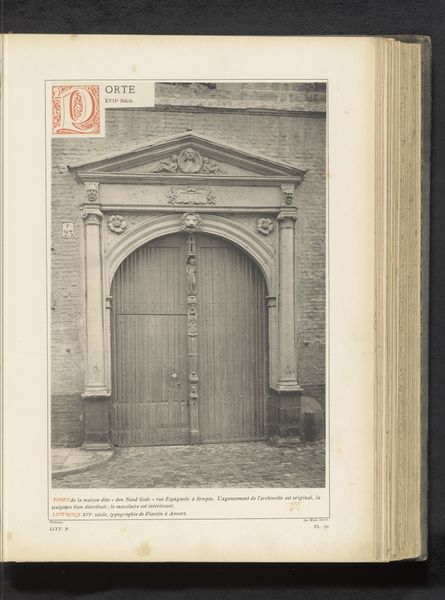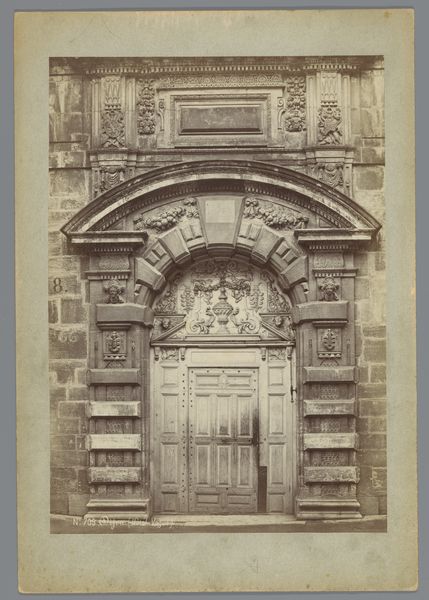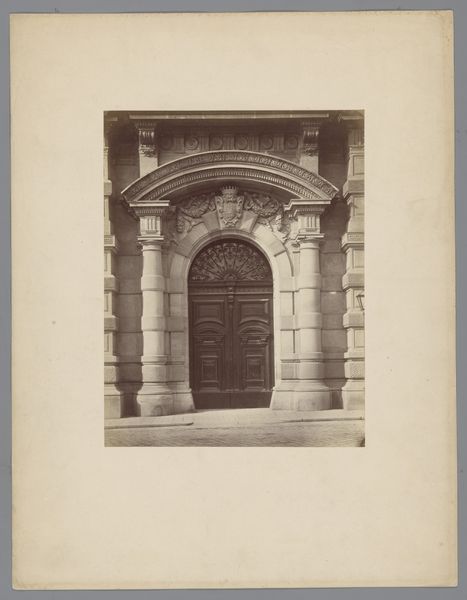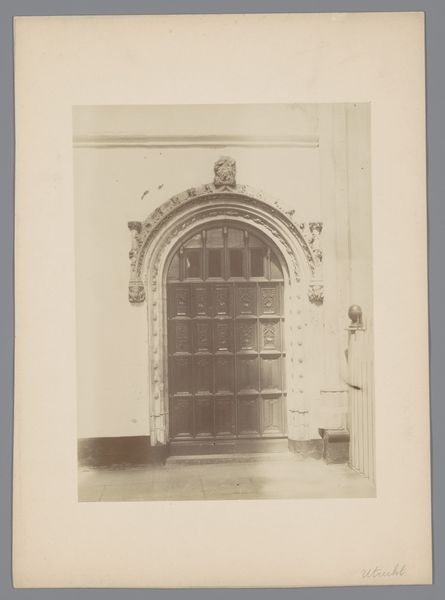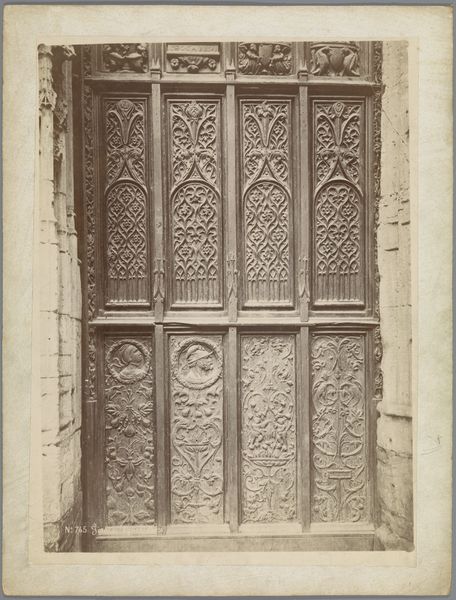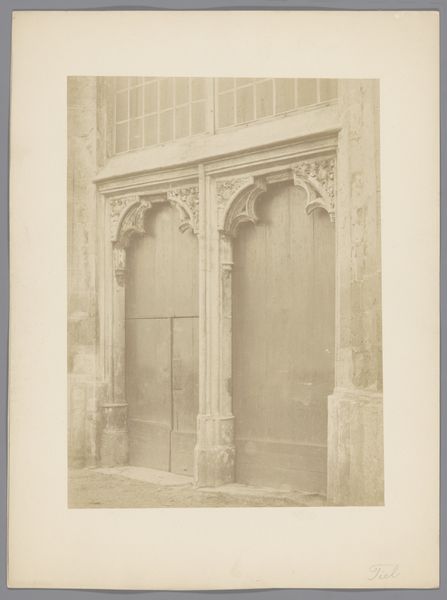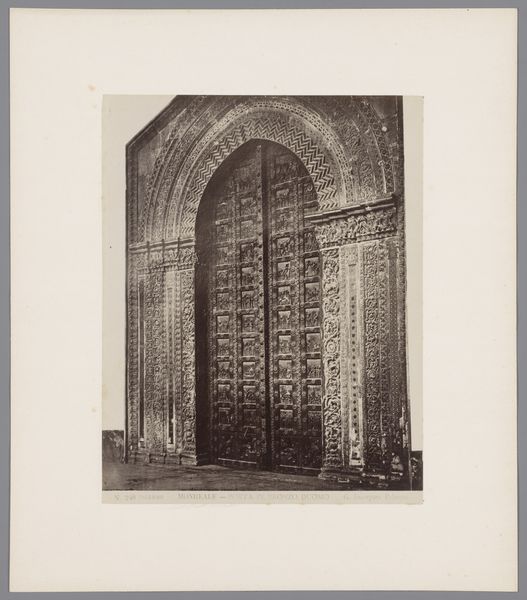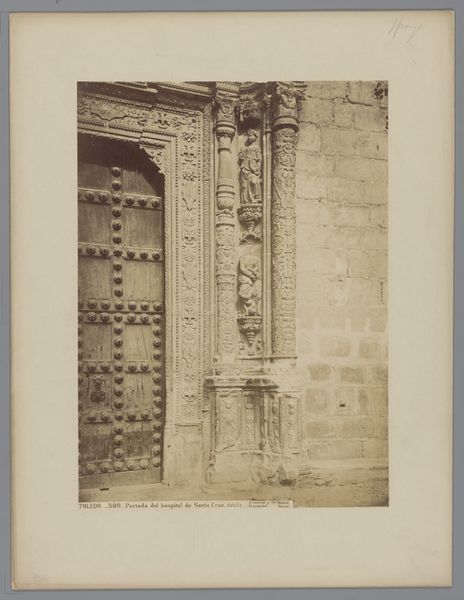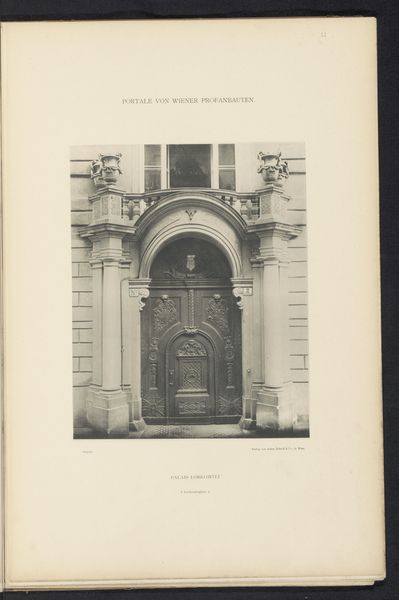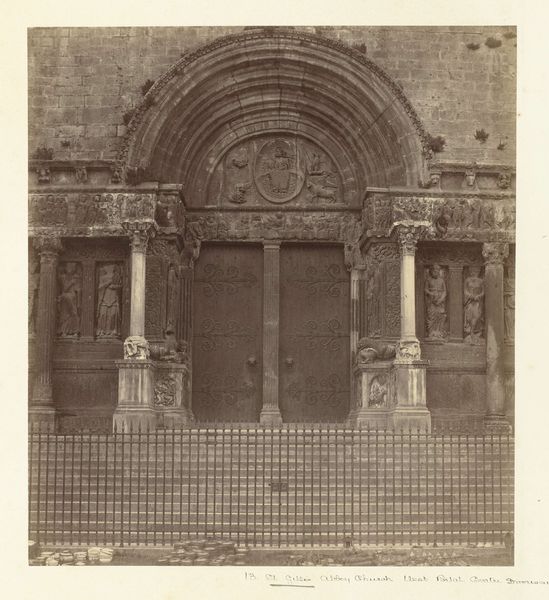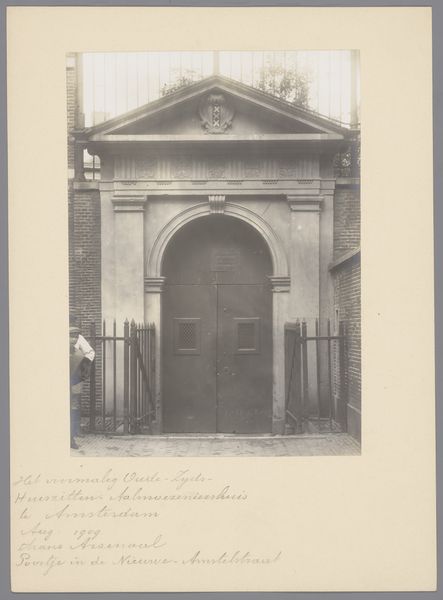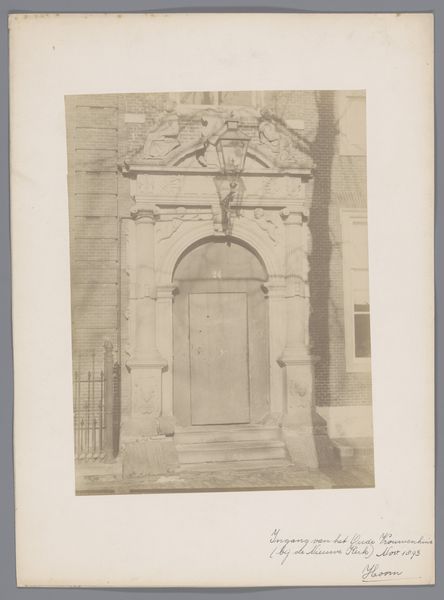
Toegangspoort van het huis van de bankier Alegre te Toledo c. 1875 - 1900
0:00
0:00
juanlaurent
Rijksmuseum
print, photography, architecture
#
aged paper
#
toned paper
#
muted colour palette
# print
#
photography
#
carved into stone
#
geometric
#
column
#
cityscape
#
architecture
#
historical font
Dimensions: height 339 mm, width 248 mm
Copyright: Rijks Museum: Open Domain
Editor: Here we have a photograph, taken sometime between 1875 and 1900 by Juan Laurent, titled "Toegangspoort van het huis van de bankier Alegre te Toledo" - or "Entrance gate of the house of banker Alegre in Toledo." It depicts exactly that: a very impressive doorway! The muted palette gives it an almost solemn feel. What story does this photograph tell, viewed through a historical lens? Curator: This image presents a fascinating glimpse into the social and economic landscape of late 19th-century Toledo. Photography at this time served not only as documentation but also as a means of constructing and disseminating narratives about wealth and power. The subject, a banker's door, immediately speaks to economic status, doesn't it? How might the portrayal of such architecture reinforce or challenge social hierarchies? Editor: I hadn’t really considered that. I just saw an old door! I suppose showing such grandeur reinforces the power of the wealthy. Were these kinds of images often commissioned? Curator: Quite possibly. Consider the role photography played in shaping perceptions of Spanish identity during this period. Images like these could be circulated, promoting a certain image of Spain, perhaps one of established wealth and historical importance. What kind of message does the choice to photograph this particular door send about Toledo and its place in the broader narrative of Spain? Editor: So it's not just about the door, but about how that image was used to convey ideas about status and even national identity. Curator: Exactly! The very act of photographing and displaying such an entrance contributes to a larger cultural narrative. The architecture, immortalized through photography, becomes a symbol of power. It really does raise the question, doesn’t it, of who controls the image and whose story gets told? Editor: This really opens up my eyes to the layers of meaning a seemingly simple photograph can hold. I will look more attentively to that now. Thanks for pointing it out.
Comments
No comments
Be the first to comment and join the conversation on the ultimate creative platform.

